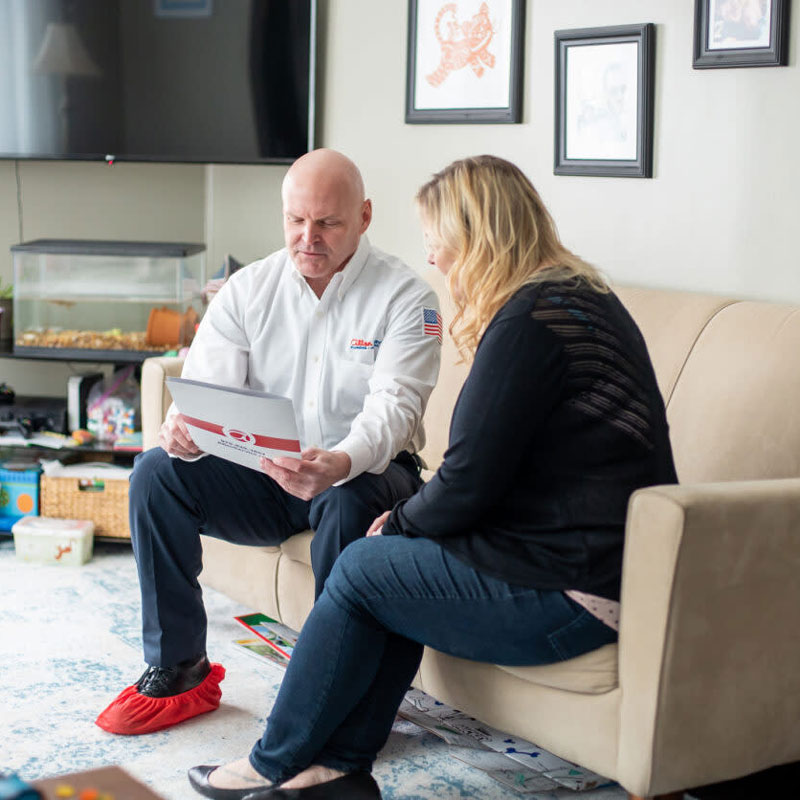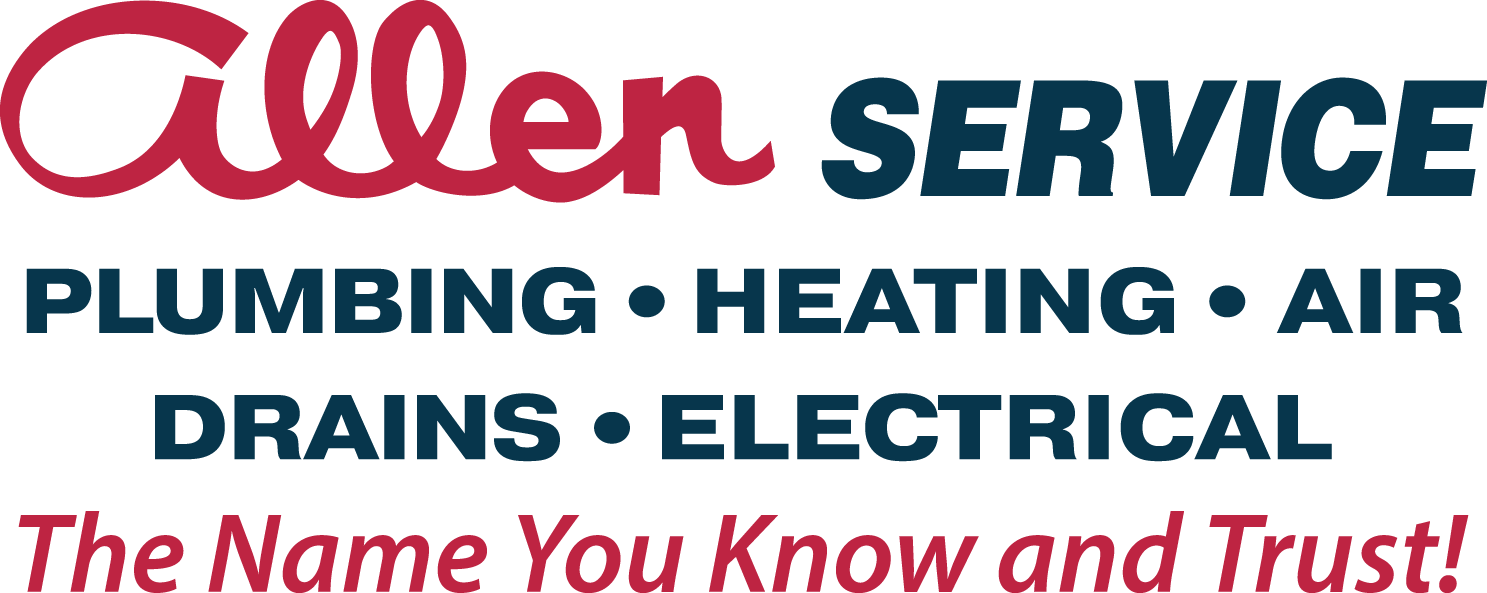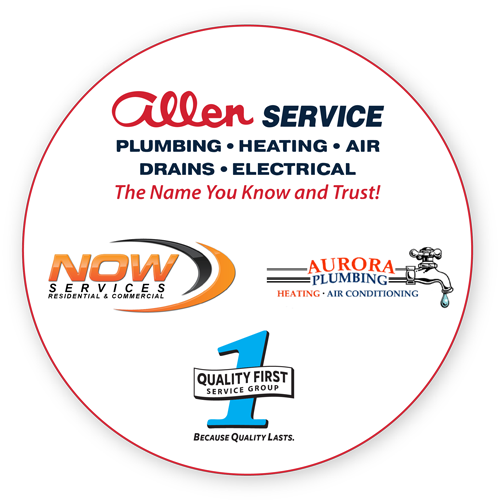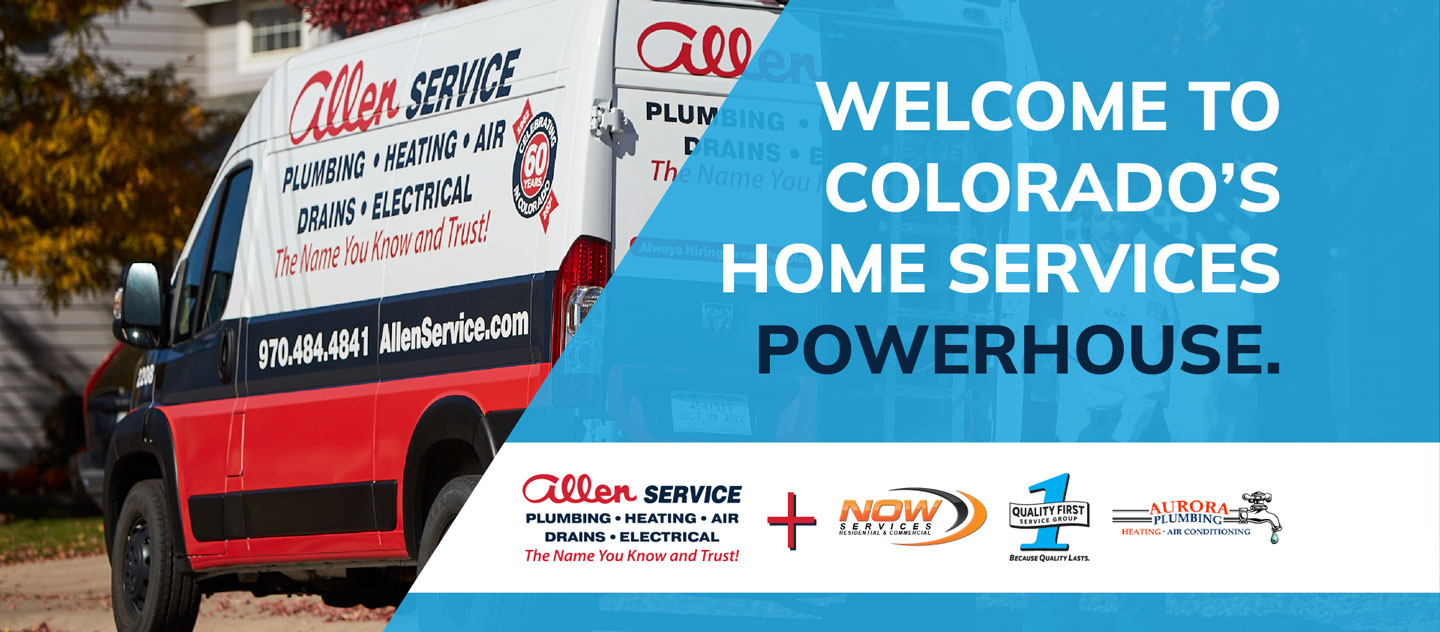
Contact Us Today
HVAC Contractor Denver: Premier Home Comfort Solutions from a Trusted HVAC Company
When your HVAC system fails in the middle of a Denver winter night or during a summer heatwave, you don't have time to research, compare quotes, and hope for the best. Every minute without heating or cooling isn't just uncomfortable – it can threaten your home's pipes, electronics, and even your family's health. Having a trusted Denver HVAC contractor before you need one might be the most important home decision you'll make this year. At Allen Service, we've been Denver's reliable partner for HVAC, plumbing, and electrical needs since 1962, providing prompt emergency service, honest pricing, and expert technicians who treat your home with respect, making us the hvac company you can trust for generations. Allen Service works with Service Financing for all your HVAC financing needs.
HVAC, Plumbing, Electrical & More
Our HVAC Company Are One Call For It All™
At Allen Service, we make home maintenance simple by providing complete HVAC, plumbing, and electrical solutions under one roof. Instead of juggling multiple contractors, you only need our number to handle all your home system needs. Our team's diverse expertise allows them to identify connected issues that specialized contractors might overlook. You'll enjoy the benefits of working with a single company that remembers your home's service history and delivers more efficient, personalized care. The value becomes especially clear when multiple problems arise simultaneously – one call to Allen Service addresses everything.
Our Qualifications Include:
- Highly Trained, Uniformed Technicians
- Prompt and Dependable Service
- Courteous Operators and Personnel
- Quality Workmanship
- Fully Stocked Trucks
- Immediate Same-Day Service
Your Trusted Emergency HVAC Denver Services Since 1962
For over six decades, Colorado homeowners have counted on Allen Service when heating or cooling systems fail at the worst possible times. We understand that HVAC emergencies don't follow business hours – they tend to happen during the coldest nights or hottest days when systems are working hardest. That's why our emergency response team is available 24/7, arriving quickly with the parts and expertise needed to restore your comfort.
Our long history means we've seen and fixed virtually every HVAC problem possible in local homes. Thousands of families have trusted us through multiple generations because we deliver reliable emergency service when they need it most.
Complete Home Services: Professional HVAC Service & More
Your home's comfort systems work together, which is why we offer complete solutions that address the big picture. Our comprehensive Denver services include everything from routine maintenance to complete system installations, all performed with the highest standards of quality. We provide honest advice about when repairs make sense and when replacement offers better long-term value. We provide detailed info about your system's condition and our recommendations, ensuring you can make informed decisions about your home.
Many Denver homes face specific challenges due to age, design, or location – our expertise helps address these unique situations with customized solutions. From improving air quality to optimizing energy efficiency, we offer services that enhance your overall home comfort and protect your investment.
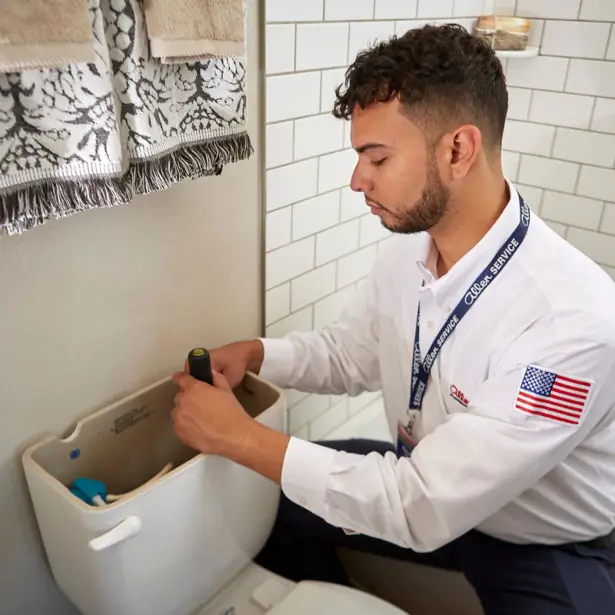
Plumber Services for All Your Home Needs
Water problems never arrive at convenient times, which is why our plumber team responds quickly to everything from small drips to major pipe bursts. We arrive ready to fix most issues on the first visit with our well-equipped service vehicles. From toilet backups to hot water heater failures, our experienced technicians handle each job with care that prevents future complications.
Many Denver homes have unique plumbing configurations due to their age - challenges our team addresses with effective, long-lasting solutions. We respect your property throughout our work, using protective coverings to keep your home clean while resolving your water issues.
Heating Contractor Solutions for Denver's Climate
Denver's temperature variations and elevation create special demands on home heating systems that require expert knowledge. The unique climate challenges of HVAC Denver systems require specialized knowledge that our technicians bring to every service call. As your trusted heating contractor, we provide maintenance, repairs, and installation services that keep your family comfortable during the cold months.
Our seasonal tune-up service helps prevent mid-winter system failures and extends equipment life. We explain heating system issues in plain language, providing honest recommendations without pushing unnecessary upgrades.
Furnace Repair Service When You Need It Most
When your heating system stops working during freezing temperatures, our furnace repair service team arrives quickly to restore warmth and protect your home. We accurately identify furnace problems on the first visit, preventing repeated service calls for the same issue. Our technicians work on all major brands and models, with common replacement parts ready for immediate installation.
We take the time to explain what caused your heating problem and how regular hvac maintenance plans from Allen Service help prevent repeated issues and extend the life of your equipment. For older systems needing replacement, we guide you through options that fit both your home's requirements and your budget.
Air Conditioning Contractor You Can Rely On
Summer heat in Denver can be intense, making dependable cooling essential for comfortable living. Our air conditioning contractor team helps you select the ideal cooling system, matching your home's specific layout and efficiency goals. We provide meticulous hvac installation that ensures optimal system performance, efficiency, and longevity for your home. Our installation process is efficient and tidy, minimizing disruption to your family's routine. Every installation includes warranties that protect your investment and provide peace of mind about your new cooling system.
Air Conditioning Repair Service for Summer Comfort
Our cooling specialists deliver fast air conditioning repair service when your system fails during hot Denver days. Rather than just treating obvious symptoms, we perform thorough diagnostics to solve problems at their source. Our experienced technicians repair all cooling system types from central units to ductless systems. For aging equipment, we provide straightforward assessments about whether repairs or replacements offer better value. Our seasonal maintenance helps prevent breakdowns during peak summer heat when cooling matters most.
Electrician Services for Safety and Efficiency
Our licensed electrician team puts safety first while resolving all types of electrical issues throughout your home. From simple fixture replacements to complete panel upgrades, we follow strict adherence to code requirements that protect your property. Problems like flickering lights, overloaded circuits, and outdated wiring receive careful attention from our safety-conscious professionals. We specialize in electrical improvements that support today's technology demands while improving overall efficiency. Our work is always neat and thorough, leaving your electrical systems safer and more reliable.
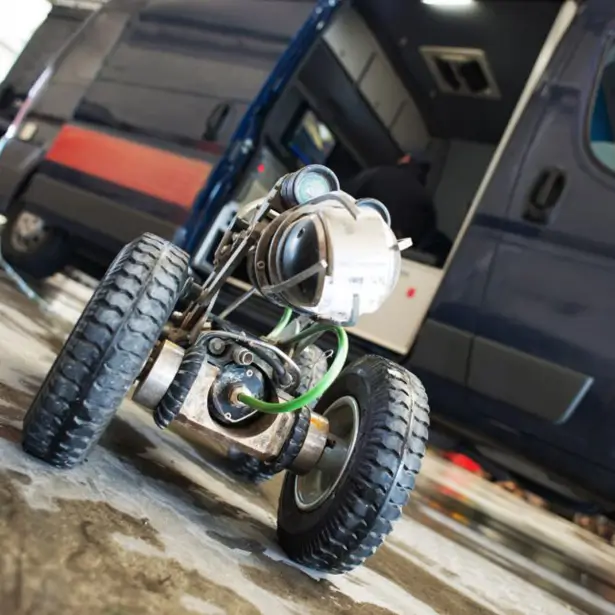
Drainage Service to Protect Your Property
Blocked drains and sewer line issues can quickly cause expensive damage if not properly addressed. Our drainage service team uses video inspection equipment to pinpoint blockage locations without guesswork. We clear stubborn clogs using professional tools that solve problems without harming your pipes. For homes with ongoing drainage problems, we identify and fix the underlying causes rather than offering temporary solutions. We provide maintenance programs designed to keep your drains and sewer lines flowing freely throughout the year, preventing costly emergencies.
Call Us Today
You Deserve Service This Good!
Why Denver Homeowners Choose Allen Service?
Denver families have been trusting Allen Service with their homes for decades, and there are good reasons why we've become the go-to HVAC contractor in the area. Our commitment to quality service shows in every aspect of our business, from your first phone call to the completion of your project. Here's what sets us apart:
- Highly Trained, Uniformed Technicians: Our team of professional hvac technicians undergoes continuous training to stay current with the latest industry advancements and technologies. They arrive at your home in clean uniforms, making them easily identifiable and professional.
- Courteous Operators and Personnel: From the moment you call our office, you'll be treated with respect and attention. Our customer service team listens carefully to your needs and coordinates the right solution for your situation.
- Fully Stocked Trucks: Our service vehicles come equipped with a comprehensive inventory of parts and tools, allowing our technicians to complete most repairs on the first visit without delays waiting for parts.
- Prompt and Dependable Service: When we set an appointment time, we keep it. Our technicians arrive within the promised window, respecting your schedule and providing reliable service you can count on.
- Immediate Same-Day Service: We understand that HVAC emergencies don't wait for convenient times. That's why we offer same-day service for urgent issues, helping you restore comfort to your home as quickly as possible.
Our reputation is built on consistent, quality service that speaks for itself. We're proud of the positive reviews our team receives from satisfied customers throughout Denver. We encourage our valued clients to share their experiences through reviews, as your feedback helps us continue improving our service and helps other homeowners find reliable HVAC solutions.
Contact Allen Service Today!
Don't wait until a minor problem becomes a major emergency- reach out to Allen Service now for prompt, professional help. Our comprehensive hvac services cover everything from emergency repairs to planned system upgrades that improve your home's comfort. Experience the Allen Service difference today and discover why so many Denver homeowners trust us with their most important home systems.
Frequently Asked Questions
